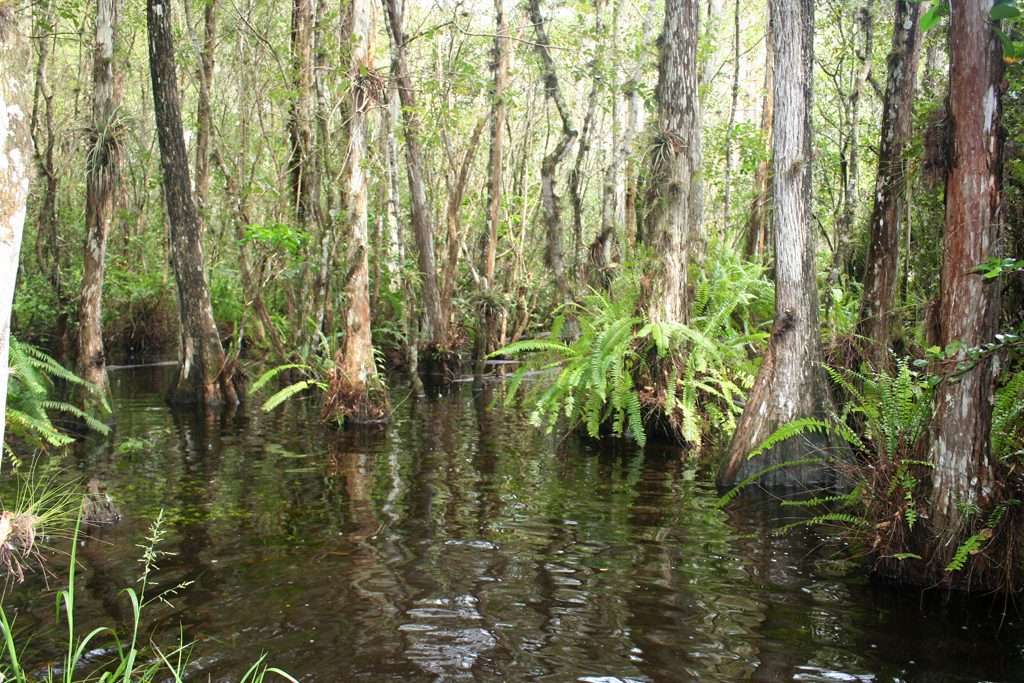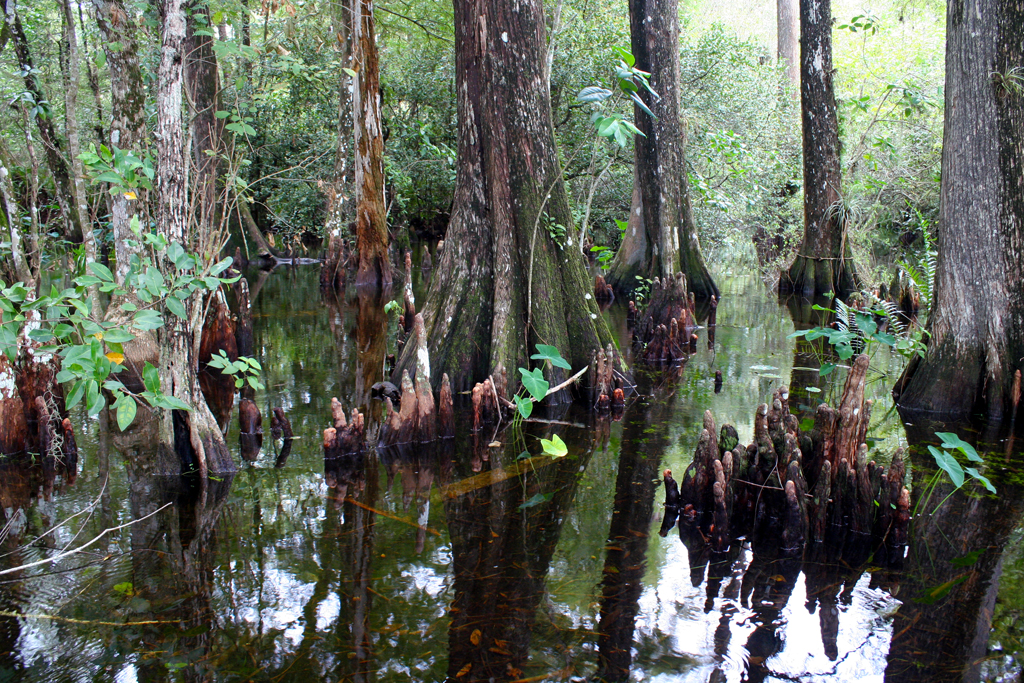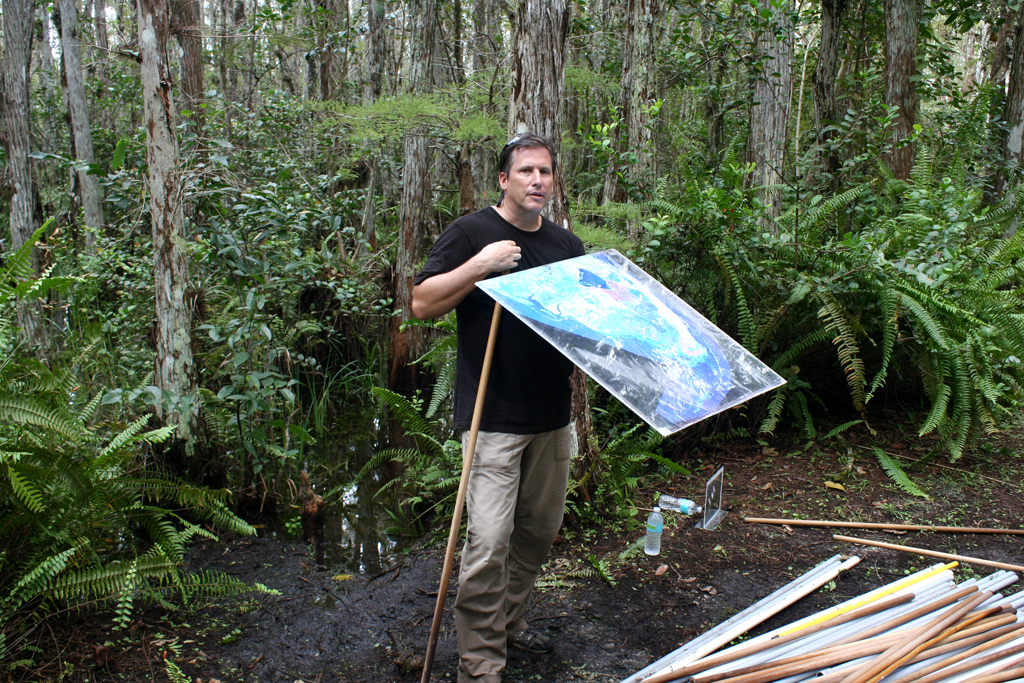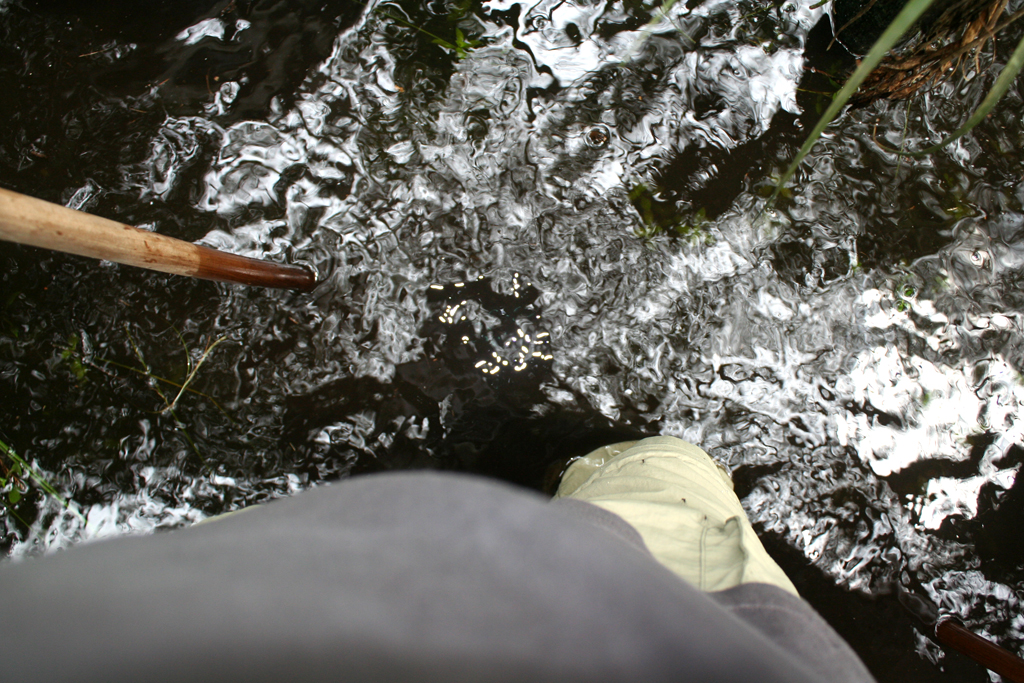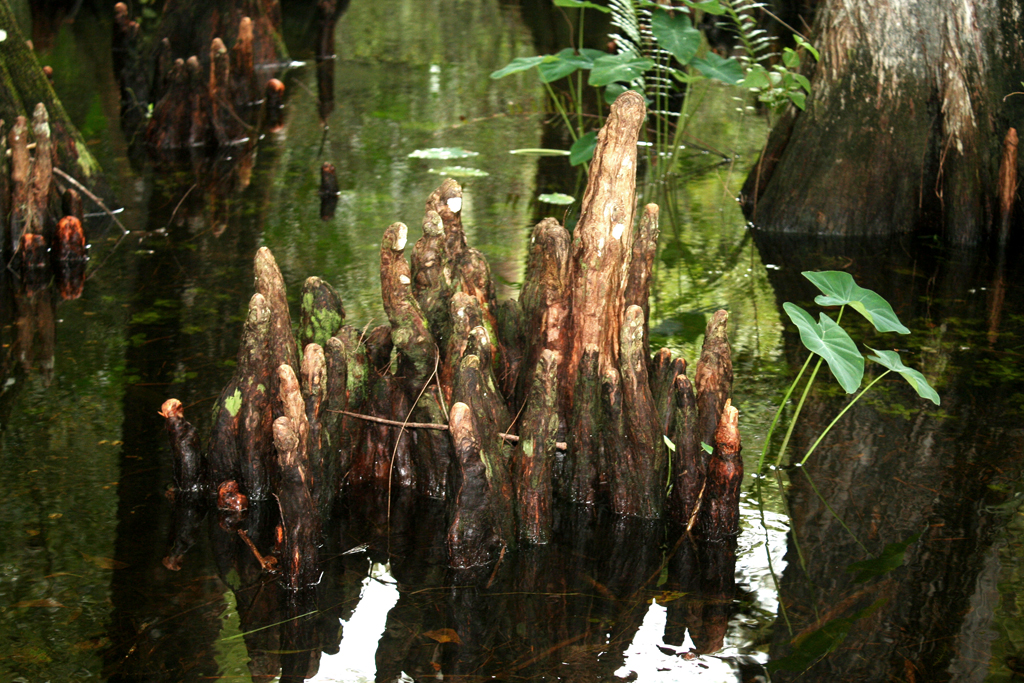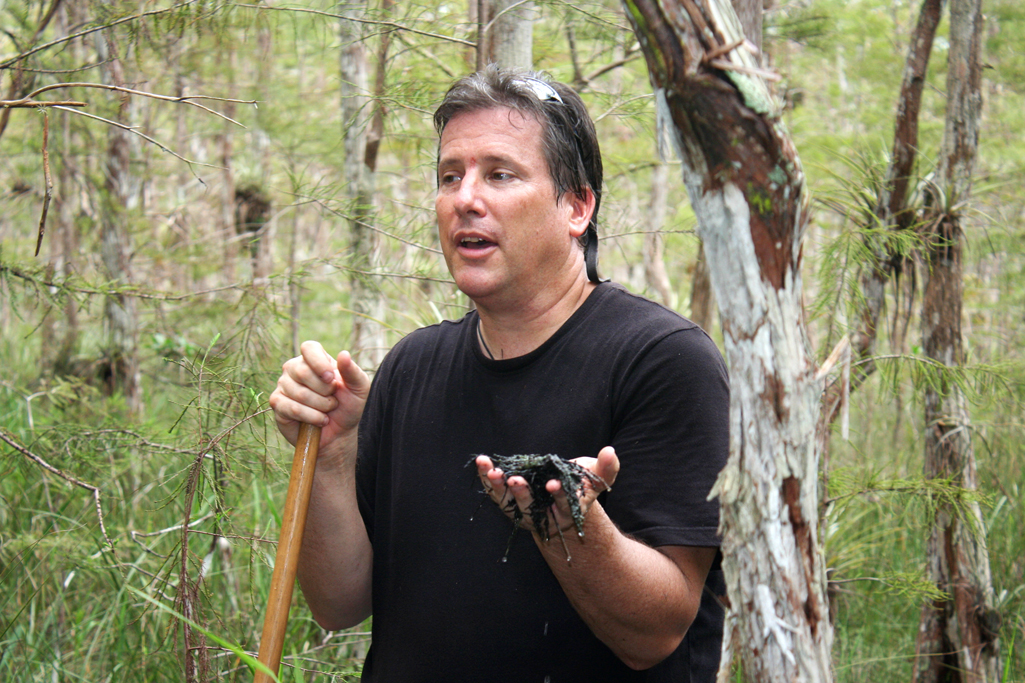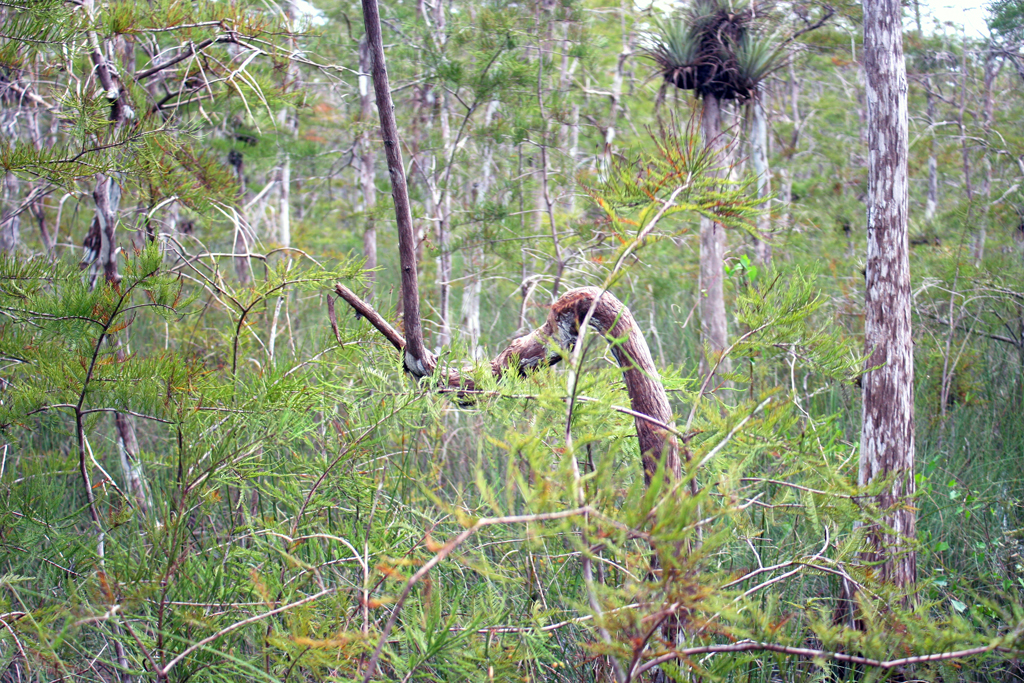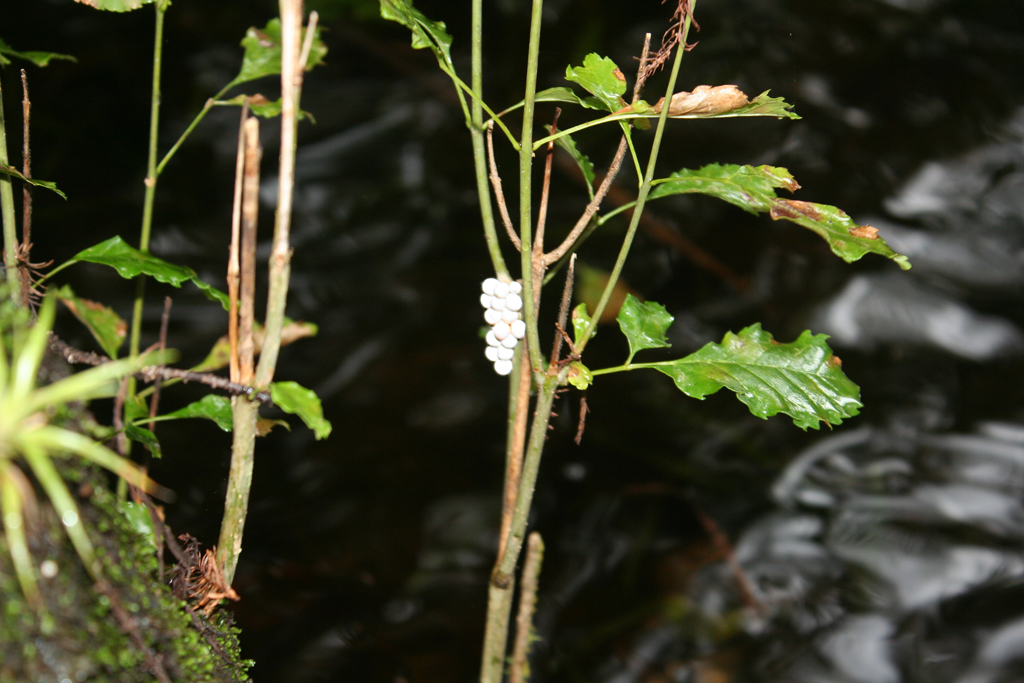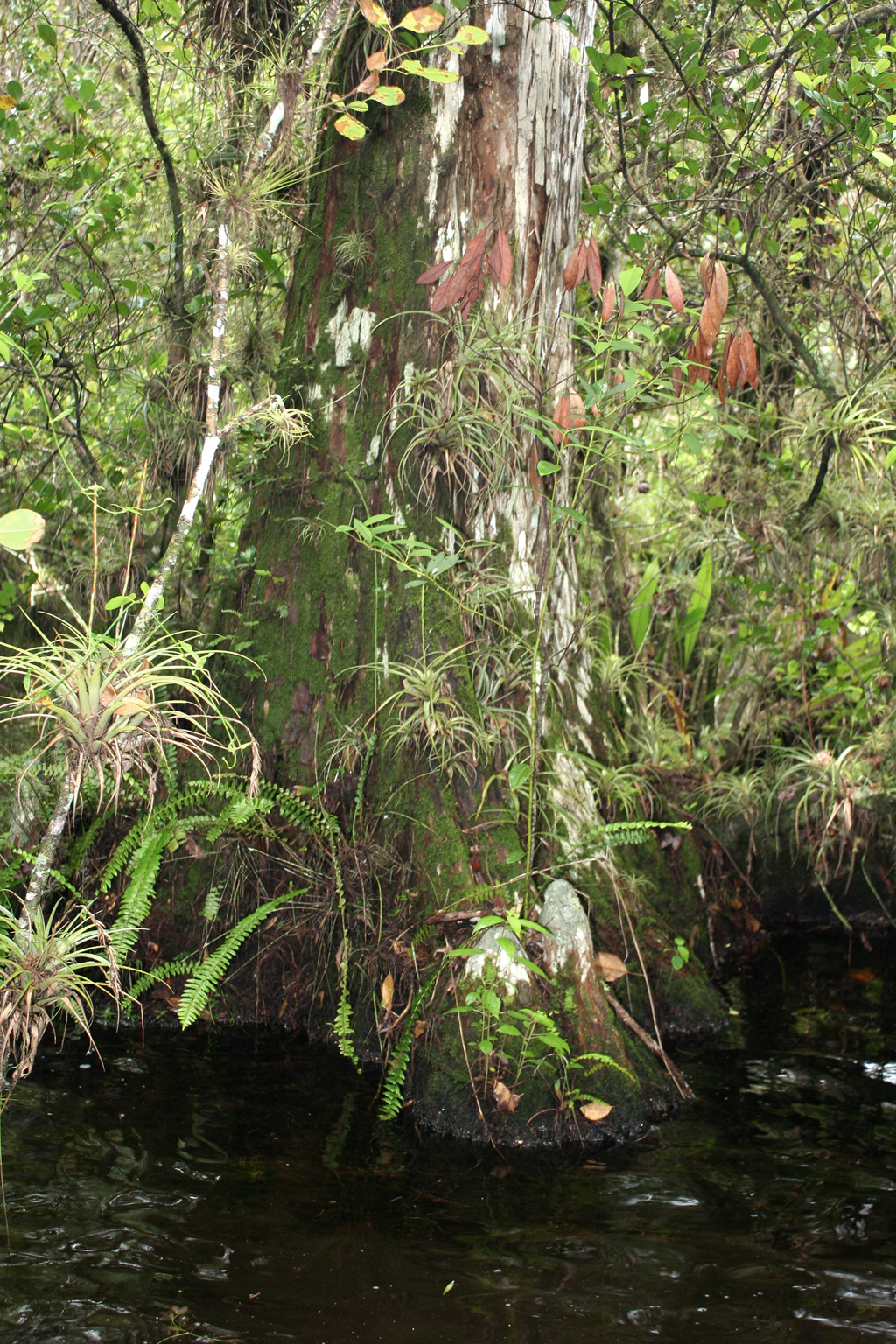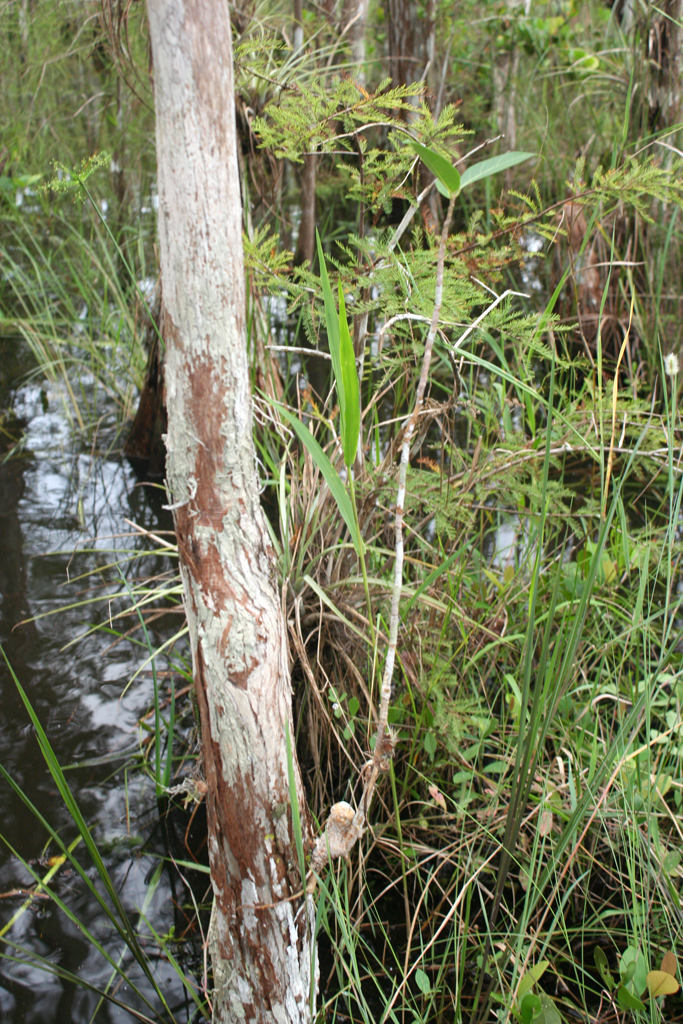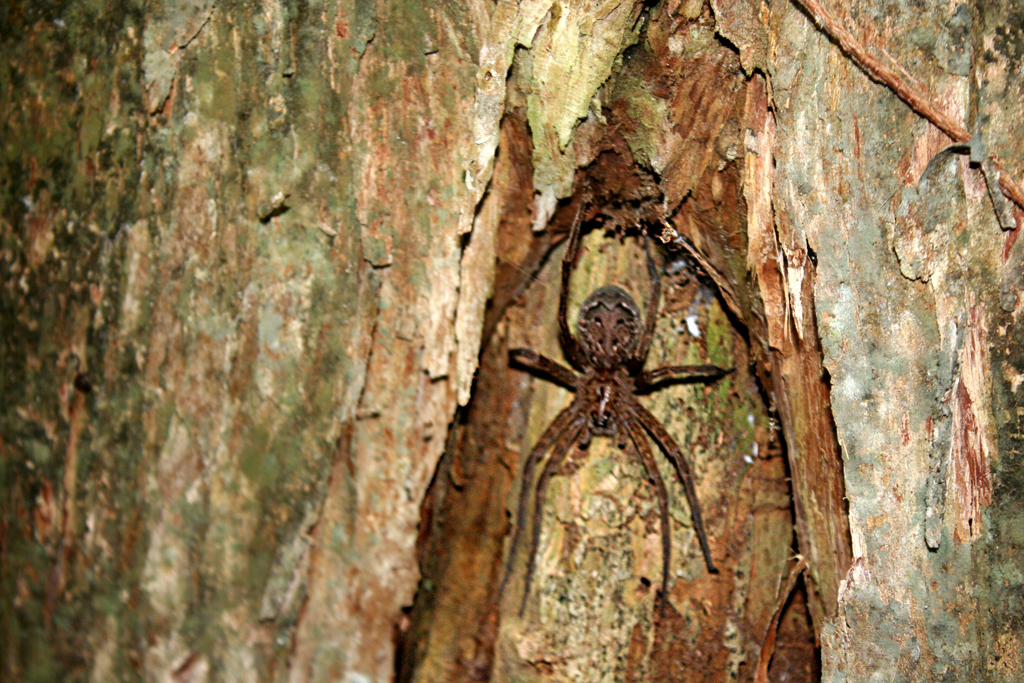Stompin’ the Swamp…
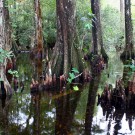
Longing for those days out West when the Colorado Rockies or the Utah Canyons provided the backdrop for a day’s adventure, we decided it was time to once again connect with nature in a new and adventurous way, only this time in the Florida swamps!
During our days at Selby Gardens, we had the distinct pleasure and honor of working with and meeting Clyde Butcher when the Gardens hosted an exhibit of his Florida landscape photography. Clyde is a world renown black and white nature photographer of 40 years and his extraordinary photographs reflect his personal relationship with the environment. Among his many accolades and awards, the Sierra Club has given him the Ansel Adams Conservation Award, which is given to a photographer who shows excellence in photography and has contributed to the public awareness of the environment.
Clyde and his wife Niki annually host “Muck About” swamp walks to the public behind their house in Big Cypress Swamp in South Florida over Labor Day Weekend to introduce them to the swamp up close and personal. We decided to take the plunge (no pun intended) and find out why this landscape captured Clyde’s interest and heart so many years ago.
We were scheduled for a 2:00PM walk and knowing that Clyde’s studio/home resides in proximity of the Florida Everglades (3 ½ hours from our house) we got up early, ate breakfast and headed out to make sure we were there in time for our 1:30PM check in. We were told to gear up with long pants, a hat, old sneakers and lots of bug spray. We also were told to bring a complete change of clothes since we would no doubt NOT want to drive 3 ½ hours back in swamp-laden attire! This was a routine we were accustomed to from our trip to the Amazon.
We arrived at the studio just in time for check-in where we were immediately asked to sign the obligatory waiver and disclaimer promising not to sue if we contracted some deadly virus or disease or got attacked by an alligator, etc. This was a little unnerving, but again, this was familiar from some of our other adventures as well. Besides, what could go wrong when wading in waist deep murky swamp water in the Florida Everglades?
Our group consisted of 11 people and our guide, Brian Call. Brian is also an amazing photographer and has worked with Clyde for many years. He was very knowledgeable and had a very calming demeanor. Our guide outfitted us with walking sticks and bottled water and off we went.
Brian first gave us a small lesson about the history of the issues within the Florida Everglades. He told us that in the early 1900’s the Army Corps of Engineers was tasked to forever change the Everglades by diverting the natural flow of water. The Corps was responsible for constructing more than 1,400 miles (2,300 km) of canals to divert water away from the Everglades after 1947. The Everglades were in imminent danger of disappearing forever due to gross mismanagement in the name of progress, and real estate and agricultural development. Through the efforts of those like Marjory Stoneman Douglas (The Everglades: River of Grass) and others, the Everglades’ importance as an environmental ecosystem was clearly demonstrated. It is the largest track of wilderness east of the Rocky Mountains and was established as a National Park in 1947, including Big Cypress swamp. There is still an on-going restoration project to mitigate some of the damage that was done by restoring water flows that once were in place.
Our group was led off the gravel path and literally into the swamp. The water was cool and the sky was overcast. This was a welcome relief to the heat and humidity that is common in September in Florida. We were instructed to use our walking sticks to feel our way ahead of us for the myriad of obstructions that lay just below the surface of the water. Within seconds we were thigh-deep in murky black swamp water, cool and musty smelling. We couldn’t help but notice how calm and serene this environment was, even though our hearts were pounding at the thought of what we couldn’t see in the water.
We pushed those thoughts out of our minds in order to focus on the simple task of walking – not an easy thing to do in a swamp! We could feel branches and rocks underfoot. We knew this was a Cypress swamp and that Cypress trees grow by sending “knees” up from the ground like saplings in a forest. Those “knees” were all around and were easily hidden in the water – making the task of walking that much more treacherous. We quickly realized that our sense of sight would not be of much help to us since we had to rely on our sense of touch and what we were feeling with our walking stick, very similar to those who have lost their sight but still manage to be ambulatory.
Walking was challenging to say the least. We would feel the branches but not know exactly how long they were or if they were jutting up enough to have to climb over. There were floating logs at the surface of the water that needed to be traversed and the dense vegetation of the forest made this seem like nature’s version of a military-style obstacle course.
After 10 minutes our guide stopped and let us gather our bearings while he educated us about what he called “periphyton” or the prolific mat of fungi, algae, microbes and associated plants and animals that attach to the submerged surfaces we were walking on. Periphyton is critically important to the swamp ecosystem because it is photosynthetic and provides food for many swamp inhabitants. It also provides a habitat for organisms allowing them to lay eggs, etc. It grows in nutrient-poor water, provided it has clean water to grow in and is an important indicator of water quality in the swamp.
Our guide led us on. We quickly realized that, as in nature, we could accomplish the task of walking safely in the water as a group working together rather than as individuals working alone. We each started reporting branch obstacles, dips in the terrain and other hazards to those behind us so as to keep the entire group moving forward safely. Ants and other creatures have survived and flourished using this same skill.
Our guide pointed out a very crooked tree and asked us if we thought it grew that way? He assured us that it didn’t and reported that the indigenous Indian tribes that used to live in the area many, many years ago used to bend saplings and wrap periphyton around the break to keep the sapling alive. This was a sign to other in the tribe of something important in the area that was intended to be emphasized like a food or water source.
Our guide stopped and pointed out what looked like a clutch of white little pearls attached to a branch just above the water line. We gathered around as he explained what we were looking at. These were Apple snail (Pomacea paludos) eggs. The Apple Snail is the principle food for Snail Kites (native to Florida, endangered and considered the rarest bird of prey in the nation). The snail, also native to Florida, is the only large Florida snail that comes to the surface of the water. A remarkable example of evolutionary adaptation, the Kite extracts the snail from the shell using its greatly curved bill. The Kite’s main threat is loss of wetland habitat because if there is no water in the swamp, the snail cannot thrive and neither can the Kite. It became very evident how critical this ecosystem is to the many creatures that depend on it and how delicate the balance of life is in the swamp!
Suddenly, we felt rain drops start to fall. We heard the clap of thunder and had no idea if lightening strikes were amidst. We couldn’t see the sky very well through the dense forest canopy. We’ve learned as Florida residents that water conducts electricity and the last place you want to be in a lightning storm is in water! So there we all were, in the swamp in a typical Florida summer rain storm. What to do?
We just kept moving. Again, the task of walking was arduous as we would step over the next thick web of branches underfoot only to land in a trench that brought the water waist high. One of the ladies behind us lost her footing and ended up falling in completely. She quickly regained her footing and laughed it off. Such are the perils of mucking about! We had forgotten about the lightning and were enjoying the walk when our guide called back to his assistant bringing up the rear of the group that the next trail marker seemed to be missing. Lost you say?
The guide-assistant came to the front of the line where we were all stopped and waiting for further direction. For a moment we wondered if this was just a ruse to add to the drama, but we could see it was not. We thought were momentarily lost in the swamp. However our guide spotted the marker obscured by the dense vegetation and we began to move on.
We stopped along the walk to view various orchid and tillandsia specimens that clung to their host trees as epiphytes will do. Art pointed to a specific plant that seemed to be clinging to a tree but did not look like a typical epiphyte. Our guide noted that the plant was a strangler fig that attaches to a host tree that eventually grows to out-compete its host for light which ultimately kills the host tree. The strangler fig is another primary example of evolutionary adaptation.
As we moved further through the swamp our guide stopped us again and this time was rather excited about his find! He was amazed to have come across what he called a “fishing” spider nestled in a crook of a tree. This spider is named such because it feeds on fish that it catches! The spider was easily 4”-5” long and seemed to look like the swamp equivalent of a tarantula. We each stopped to gaze at the spider as we walked by it. This is why we were so careful to use our walking sticks as support rather than the trees. Some of us gazed more quickly than others!
Just as we were getting accustomed to the rhythm of walking in the water and marveling at the amazing symbiotic relationships of nature’s flora and fauna, we found ourselves at the end of the trail and exiting the swamp back to the gravel path we set out on. Today’s adventure can best be summed up by the words of Marjorie Kinnan Rawlings who once said, “I do not understand how anyone can live without some small place of enchantment to turn to.” Big Cypress Swamp certainly is a place of enchantment!
If you would like to see Brian’s beautiful photography, visit his website at BrianCallPhotography.com.


